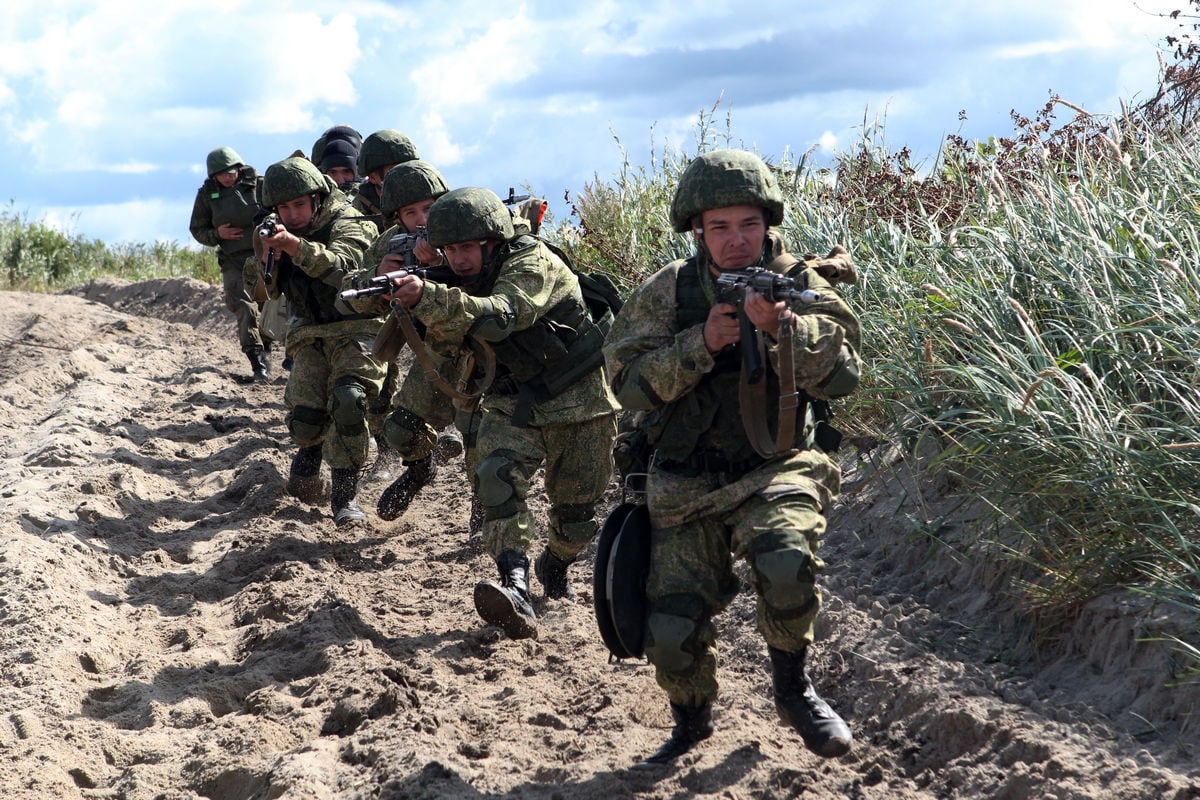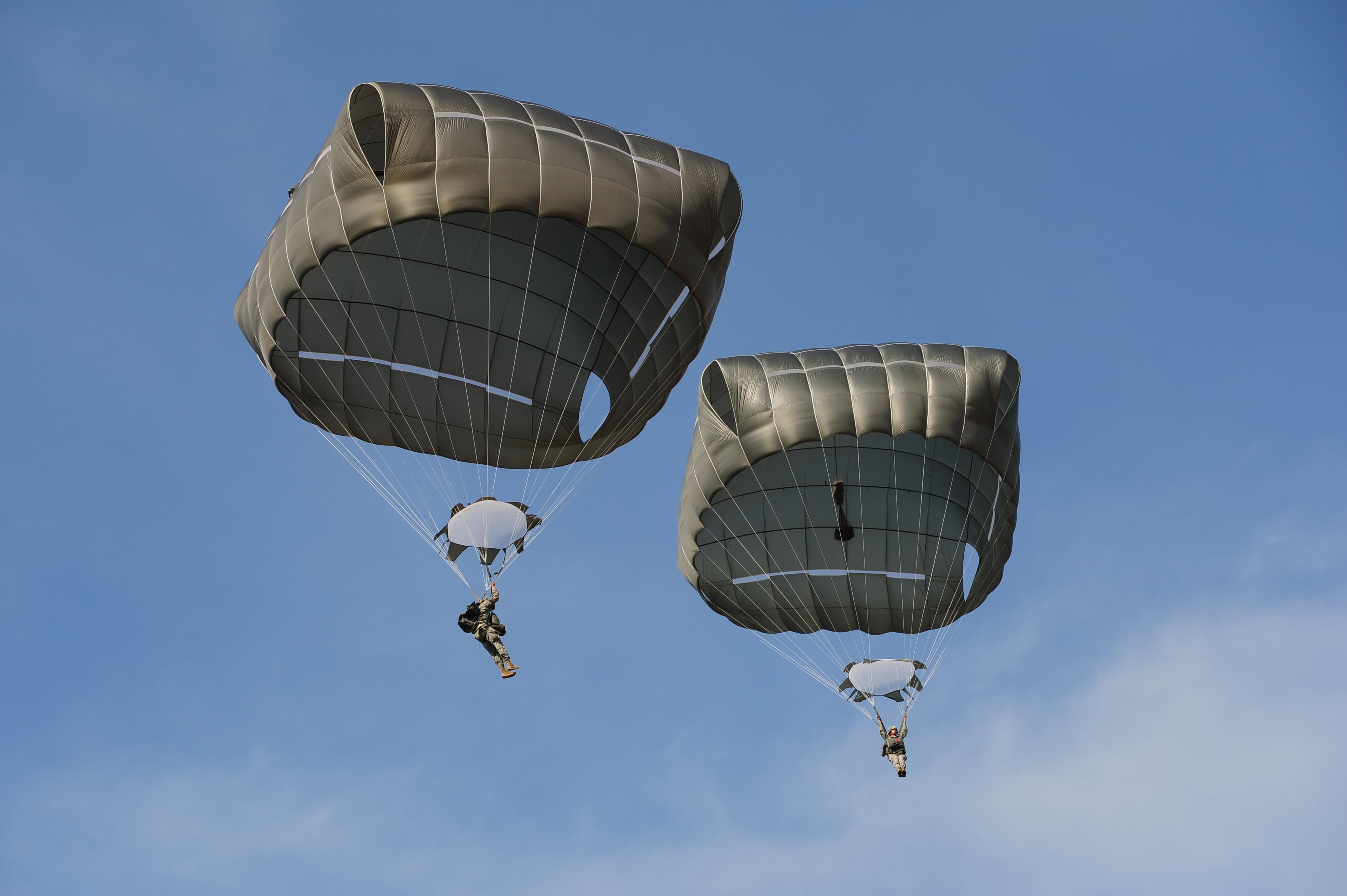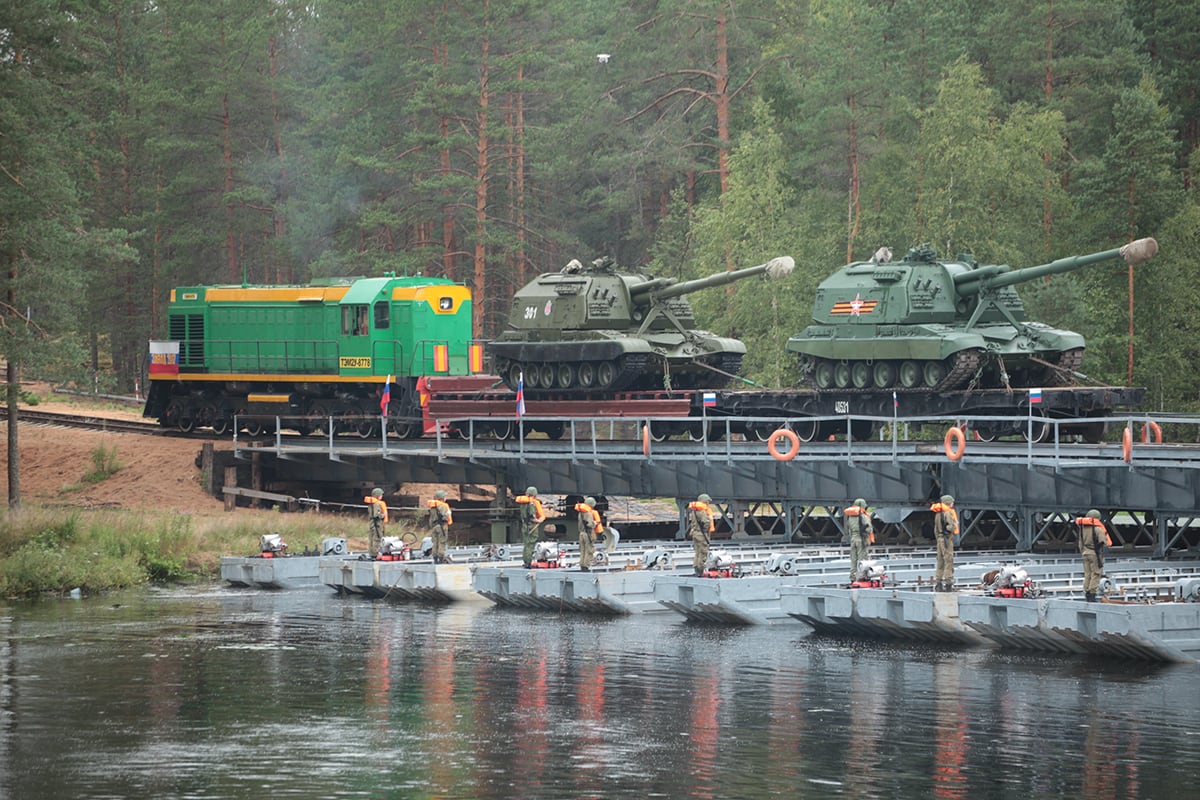If drawn into a war against Russia, U.S. and NATO forces would first begin combating Russian cyberattacks, misinformation and third-party surrogate forces, said retired Gen. Herbert “Hawk” Carlisle, former head of Air Combat Command.
Carlisle said fighting likely will follow a period of steadily rising tensions and warnings. That would give the U.S. enough notice to start moving more airplanes, preparing logistics, and increasing combat capability in Europe, he said.
Nevertheless, the Russians could seize the initiative and move quickly, putting the U.S. at a big disadvantage.
Neutralizing Russia’s air defenses would be one of the most crucial — and dangerous — missions for the Air Force.
In the early hours of hostilities, as Russian tanks, fighters and bombers roll into the Baltics, Air Force jets from England, Italy and Germany would arrive to tease out Russia’s advanced surface-to-air defenses and then try to destroy them.
The Air Force’s fighter squadrons in the region would see the most ferocious air-to-air dogfighting in decades.
RELATED

THE ARMY ARRIVES
Simultaneously, the 173rd Airborne Brigade Combat Team in Italy and the 2nd Cavalry Regiment in Germany would join NATO forces to head to the fight.
They, alongside NATO forces, would face as many as 22 maneuver warfare battalions that Russia has in its Western Military District along NATO’s border.
Reports cite a window of 36 to 60 hours for Russian forces to reach and begin siege operations on Tallinn and Riga, the capitals of Estonia and Latvia.
“Quality light forces, like the U.S. airborne infantry that the NATO players typically deploy into Riga and Tallinn, can put up stout resistance when dug into urban terrain. But the cost of mounting such a defense to the city and its residents is typically very high,” said a 2016 RAND study on deterring Russia.

The Army’s 173rd recognized its own weaknesses if thrust into combat with Russia, according to internal review documents, as reported by Politico.
The report states GPS communications would be disabled easily and quickly, forcing troops to rely on rusty high frequency radio communication skills. The brigade also has limited air defense or electronic warfare units.
NATO forces, especially armor brigades in Poland, would have to cross the Kaliningrad corridor, wedged between where Poland’s border meets Lithuania and hedged on each side by Russian territory and Belarus.
Meanwhile, the Russians could carry out previous promises to attack Polish missile defense systems.
Incremental invasions of small areas of Baltic territory may or may not provoke a NATO response. But, experts agree, an attack on Poland would.
The current two U.S. Army armored brigade combat teams in Europe would race to the fight but be outgunned and likely destroyed quickly.
“A good example is the upgunned Stryker,” said retired Army Col. Doug Macgregor, referring to the new Strykers that are outfitted with a 30mm cannon. “That would be fine on the Mexican border. That formation will be gone in 10 minutes against the Russians.”
A Russian strike through Belarus into the Baltics would be so “quick and overwhelming” that, “like with Crimea,” NATO would have to accept that those states are now in the Russian orbit, said retired Army Maj. Gen. Robert Scales.
“I think it’s very easy to consider a scenario where small units of NATO forces, to include American forces, could in fact be overwhelmed in the event of an attack,” said retired Army Maj. Gen. Richard Nash, a former commander in Bosnia.
During recent war games, NATO tried to use indigenous forces to assist — “the outcome was, bluntly, a disaster for NATO,” according the RAND study.
NATO infantry was unable to retreat and was destroyed in place.
U.S. land forces, accustomed to air and sea dominance, would face Russian interference with their support and could be on their own for hours, days, and even weeks at a time.
“What cannot get there in time are the kinds of armored forces required to engage their Russian counterparts on equal terms, delay their advance, expose them to more frequent and more effective attacks from air and land-based fires, and subject them to spoiling counterattacks,” according to the RAND study.
BY SEA
While Atlantic-based Navy assets would be ready to engage, naval experts say Russian maritime maneuvering, along with their allies, will be able to delay and tie up the Navy elsewhere.
“We can hardly pull the entire Navy out of the Pacific to do battle in Europe, lest we sacrifice our Asian alliances along with stakes of immense value,” said James Holmes, a professor at the U.S. Naval War College.
China and Iran’s navies could keep major parts of the U.S. Navy bogged down away from Western Europe.
Russian submarines would slow down seaborne reinforcements to the Baltics, Holmes said. The port of Sevastopol, Crimea, gives Russia a staging area for “anti-access” weapons in the Black Sea, Holmes said.
“In short, it could make the Black Sea into a Russian lake — safeguarding that maritime flank,” he said.

ON THE EDGES
The Norwegian government has approved six-month rotations of roughly 300 Marines in Norway through 2018.
In the event of a war with Russia, pre-positioned stockpiles would supply a force of 15,000 for 30 days of fighting and would likely provide the footprint for a larger force of Marines, said Keir Giles, a Russia expert with the Chatham House policy institute in London.
“We shouldn’t see this small contingent ... in Norway as a deterrent: It is simply providing a capability for rapid expansion, should it be necessary,” Giles said.
While soldiers, Marines and some pre-positioned equipment could be flown in within days or weeks to reinforce fighting in the Baltics, armor and other heavy items must come aboard ship.
The conflict could stall there, depending on the reaction of NATO forces and its strategic willingness.
Or, fighting could expand. A delay gives Russia time to consolidate its gains, making NATO go on the offensive in one of the more difficult kinds of fighting — regaining lost territory.
“God knows whether you could manage the conflict to bring about a ceasefire and a withdrawal or whether it would go larger,” Nash said.
Todd South has written about crime, courts, government and the military for multiple publications since 2004 and was named a 2014 Pulitzer finalist for a co-written project on witness intimidation. Todd is a Marine veteran of the Iraq War.





